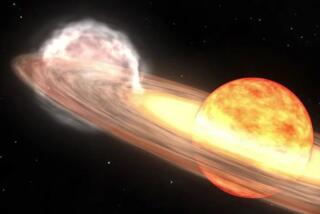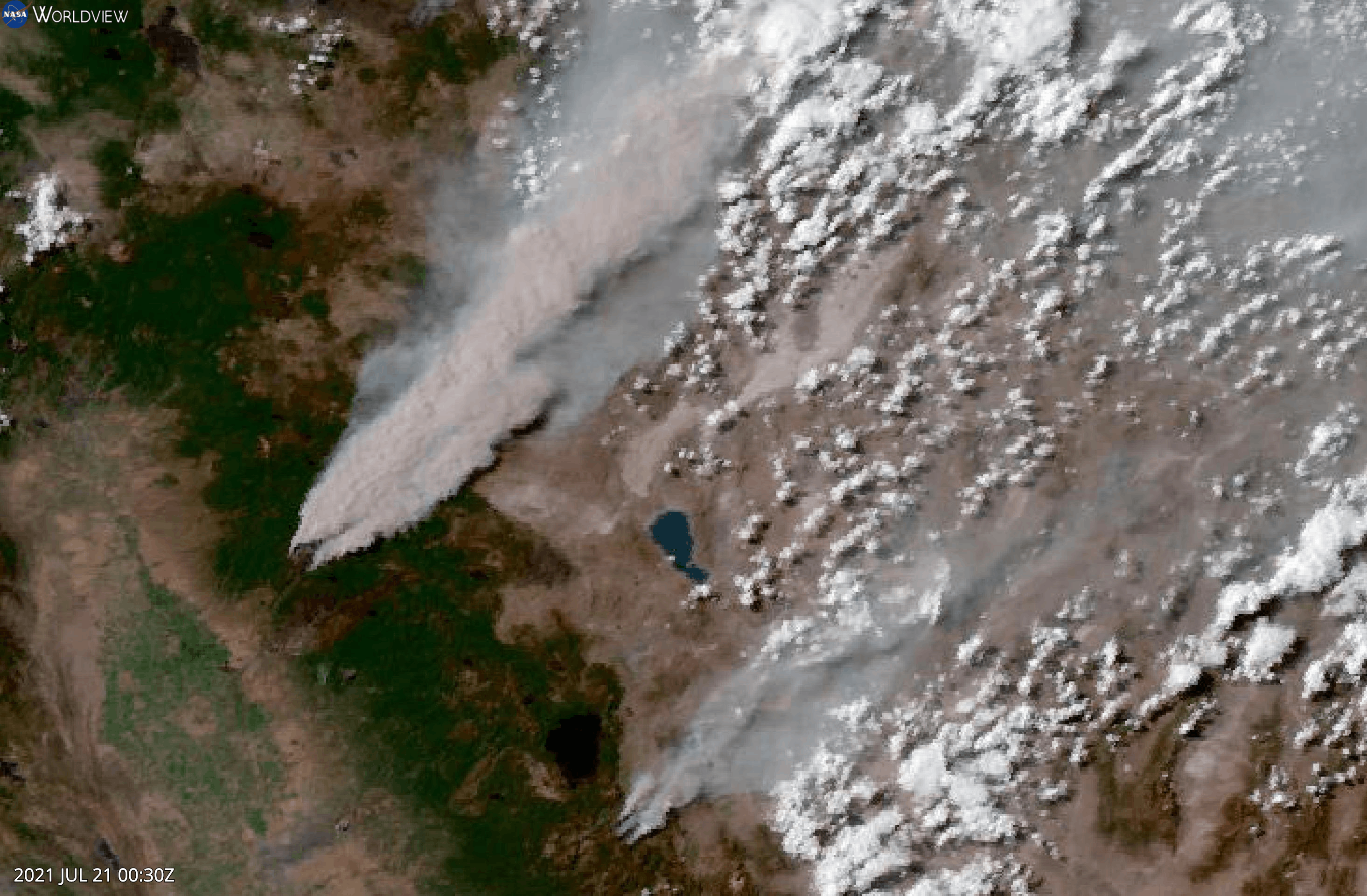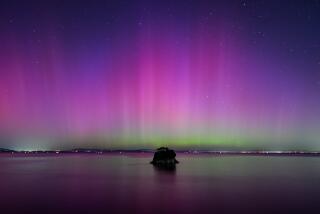Internet Proves Illuminating to Northern Lights Fans
- Share via
ANCHORAGE, Alaska — The Internet is opening up a world of information to astronomy buffs and scientists who are using satellite data to get a good look at the Northern Lights.
The National Oceanic and Atmospheric Administration has four polar-orbiting satellites equipped with the Space Environment Monitor (SEM). Aboard the SEM-2 is the Total Energy Detector, which is actually eight detectors that count charged particles moving toward Earth.
Internet users also are availing themselves of NASA’s Polar Satellite, which has a small camera called the Ultraviolet Imager that takes pictures of the aurora’s ultraviolet light. The images are updated every seven minutes on the World Wide Web when the satellite is in contact with Earth.
Amateur astronomers say the data now available on the Internet are taking the guesswork out of one of nature’s wonders. The information is letting them know when it makes sense to bundle up, venture out in freezing temperatures and drive to remote locations to view the aurora borealis.
The NOAA satellites download information to a tracking station at Gilmore Creek northeast of Fairbanks as often as every 105 minutes. The information is sent by satellite to a NOAA computer facility in suburban Washington, D.C., and from there to NOAA’s Space Environment Center in Boulder, Colo.
David Evans, an SEC scientist in Boulder, said the whole process takes about 45 minutes. Downloaded images of the aurora ovals on the North and South poles show up on the Web about once every hour.
Evans said downloading the information began four years ago and the Web site has become increasingly popular. Between 2,000 and 4,000 Internet users access the SEC’s Web site daily, and that number increases to more than 10,000 users a day when solar storms are predicted.
Amateur astronomer Richard Pellessier of Anchorage said before he began using the Web he bundled up more often to drive beyond the city lights, only to be disappointed by a weak display or none at all.
“I’ve been using the Internet products, especially the downloaded satellite pictures and measurements, for about two years now,” he said. “I just want to know if it is going to make sense to go out tonight or not.”
The aurora borealis is caused by solar disturbances that produce electrically charged particles, which move toward Earth at 900,000 mph. The larger the solar disturbance, the more likely an awesome display.
“These particles are energized then and slam into the atmosphere and collide,” said Charles Deehr, professor emeritus of physics at the University of Alaska Fairbanks. “Then light is given off just like a neon sign.”
It takes about three days for the charged particles to reach Earth’s magnetic field, where they are directed around rings on the North and South poles.
The color of the aurora depends upon what type of molecule is struck by the charged particles and at what atmospheric level. Oxygen about 60 miles up produces green, the most common aurora color. Higher-level oxygen produces the rare all-red auroras. Ionized nitrogen produces blue light, and neutral nitrogen glows purplish-red at the edges of the aurora.
Deehr uses the Web satellite information to make daily forecasts, published in newspapers and broadcast on radio and television stations in Alaska.
The satellite information is particularly useful in predicting where the aurora borealis can best be viewed, Deehr said. Large solar disturbances will show up in the nighttime sky over Anchorage. Smaller solar storms rarely can be seen south of Fort Yukon, 400 miles north, he said.
Deehr plugs the information available on the Web into a model that describes what happens as the energy thrown off in the solar disturbance moves through space to Earth.
“If it hits the Earth on our model, we can say OK, we will have this disturbance at such and such a time,” he said. “We can tell within about plus or minus nine hours of when the disturbance will occur on Earth.”
Deehr said the best viewing in the United States is in interior Alaska.
“This is fat city for aurora looking,” he said.
*
NOAA’s Space Environment Center: https://www.sec.noaa.gov/pmap/
SEC: https://www.sec.noaa.gov/today.html
University of Alaska Fairbanks: https://www.gi.alaska.edu/cgi-bin/predict.cgi
Geophysical Institute University of Alaska Fairbanks: https://www.alaskascience.com/aurora.htm
Marshall Space Flight Center: https://uvisun.msfc.nasa.gov/UVI/default.html






